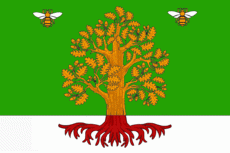Gordeyevsky District (Gordeyevskiy Rayon)
 |
 |
The area of the district is 846.54 km2.
Its administrative center is the rural locality (a selo) of Gordeyevka. In 2018 year the total population of the district was 10 620, with the population of Gordeyevka accounting for 28.4% of that number. In 2021, population was
Within the framework of administrative divisions, Gordeyevsky District is one of the twenty-two in the Bryansk Oblast. Gordeyevka serves as its administrative center. Gordeyevka is a strategically important point, being at the intersection of roads connecting the roads to Krasnaya Gora, Kostyukovichi, Surazh, Klintsy.
Map - Gordeyevsky District (Gordeyevskiy Rayon)
Map
Country - Russia
 |
 |
| Flag of Russia | |
The East Slavs emerged as a recognisable group in Europe between the 3rd and 8th centuries CE. The first East Slavic state, Kievan Rus', arose in the 9th century, and in 988, it adopted Orthodox Christianity from the Byzantine Empire. Rus' ultimately disintegrated, with the Grand Duchy of Moscow growing to become the Tsardom of Russia. By the early 18th century, Russia had vastly expanded through conquest, annexation, and the efforts of Russian explorers, developing into the Russian Empire, which remains the third-largest empire in history. However, with the Russian Revolution in 1917, Russia's monarchic rule was abolished and replaced by the Russian SFSR—the world's first constitutionally socialist state. Following the Russian Civil War, the Russian SFSR established the Soviet Union (with three other Soviet republics), within which it was the largest and principal constituent. At the expense of millions of lives, the Soviet Union underwent rapid industrialization in the 1930s, and later played a decisive role for the Allies of World War II by leading large-scale efforts on the Eastern Front. With the onset of the Cold War, it competed with the United States for global ideological influence; the Soviet era of the 20th century saw some of the most significant Russian technological achievements, including the first human-made satellite and the first human expedition into outer space.
Currency / Language
| ISO | Currency | Symbol | Significant figures |
|---|---|---|---|
| RUB | Russian ruble | ₽ | 2 |
| ISO | Language |
|---|---|
| CE | Chechen language |
| CV | Chuvash language |
| KV | Komi language |
| RU | Russian language |
| TT | Tatar language |















